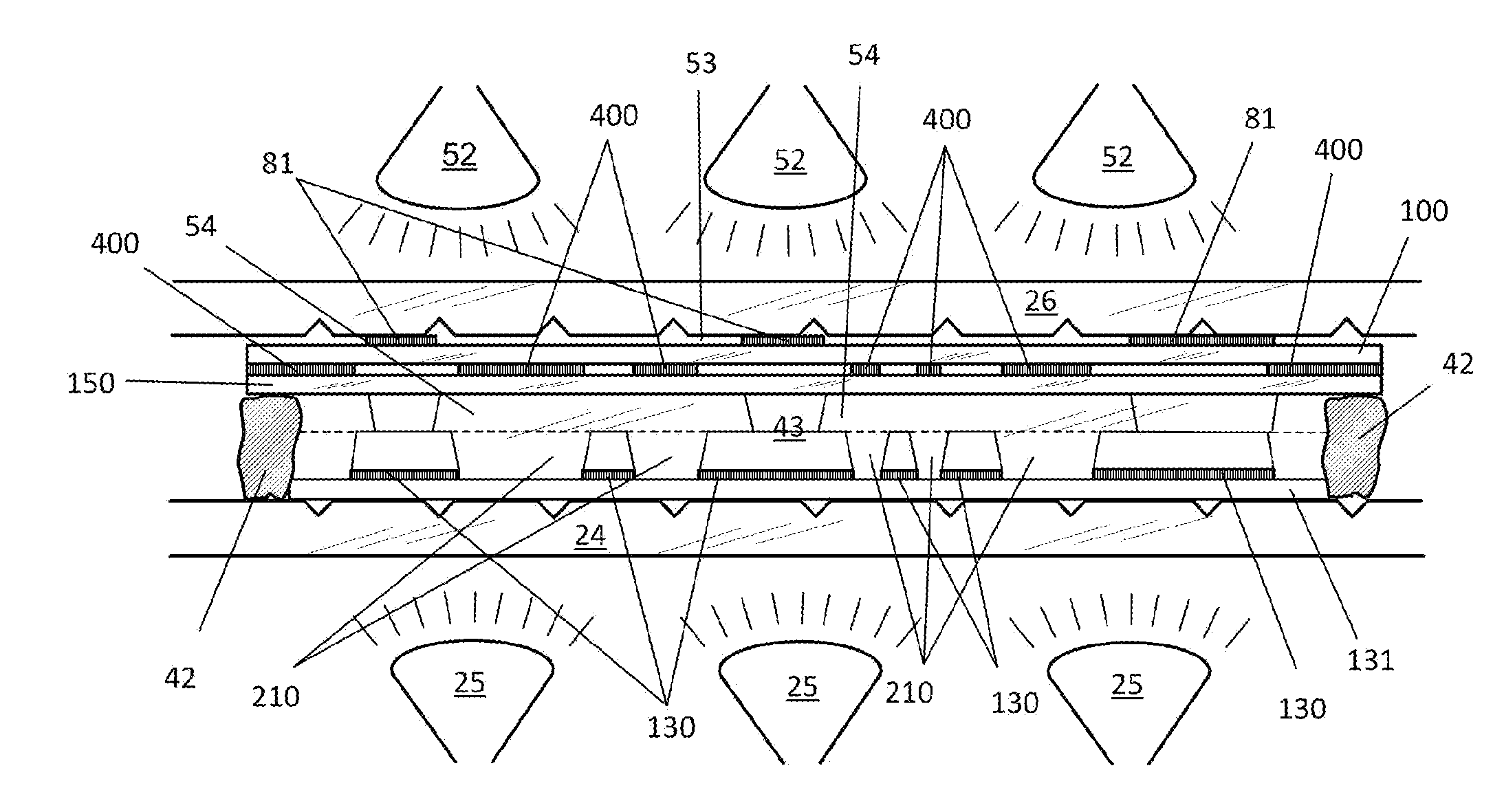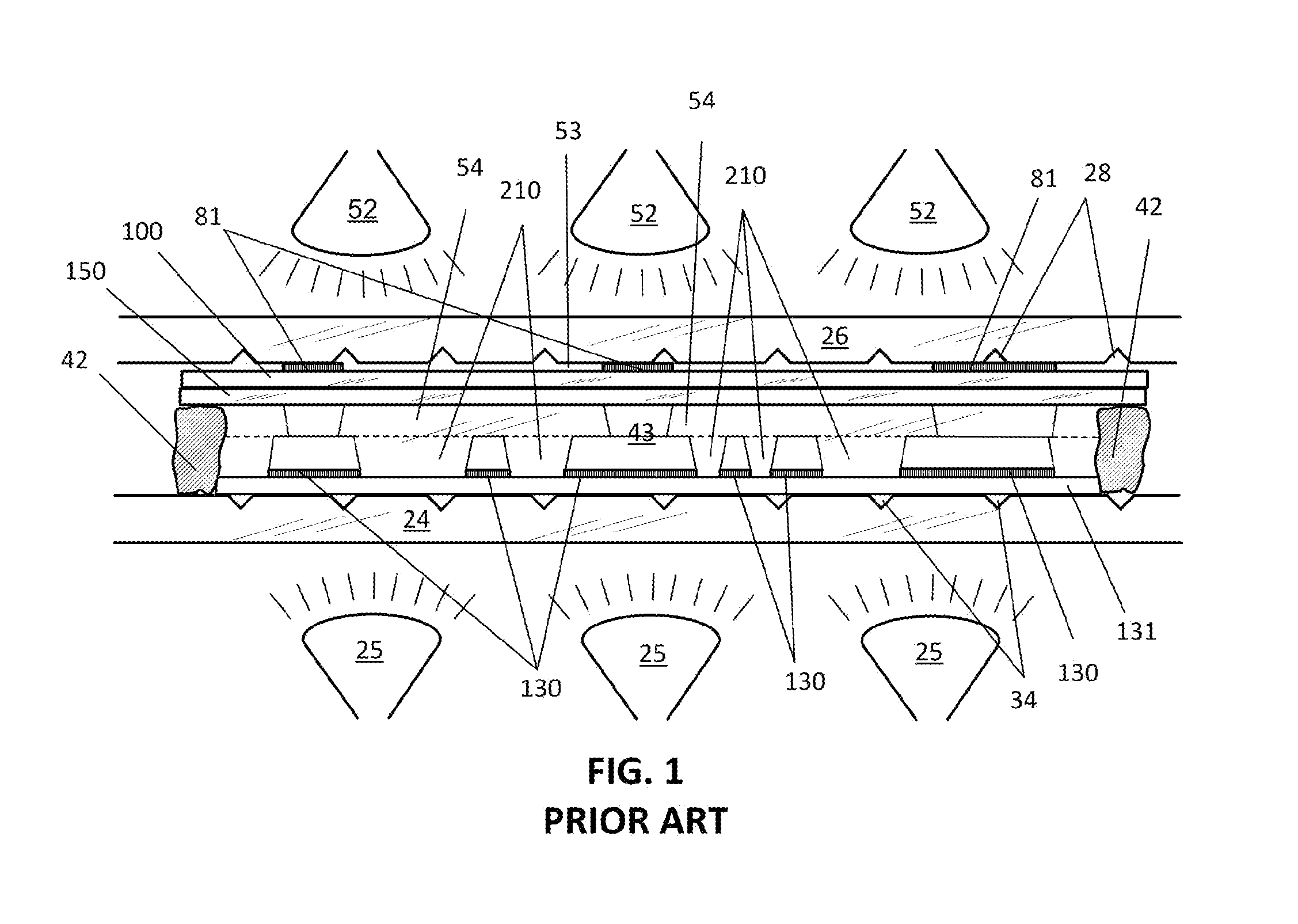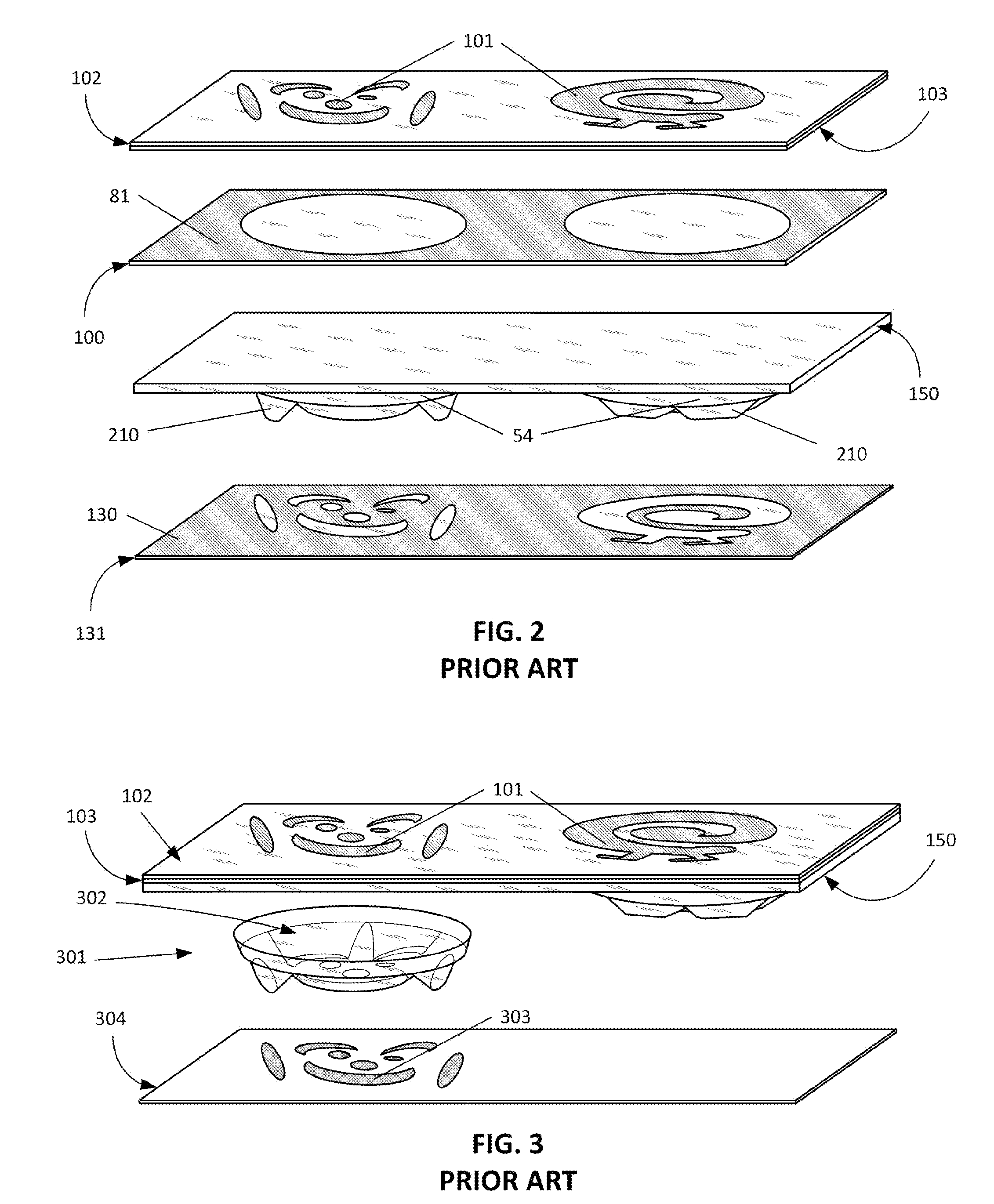Ink Compositions for Controlling Exposure in Three Dimensions within a Layer of Photopolymer, and Methods of Using
- Summary
- Abstract
- Description
- Claims
- Application Information
AI Technical Summary
Benefits of technology
Problems solved by technology
Method used
Image
Examples
example i
Use of Solvent Ink Additives to Create UV-Opaque Images for Flexo Plate Making
[0022]The most basic use of combinations of brighteners and absorbers in solvent-based inks is to make solvent ink images on film comparably opaque to aqueous ink images in liquid photopolymer flexo plate making processes. This is disclosed in U.S. patent application Ser. No. 13 / 902,301, which is incorporated into the instant application in its entirety and constitutes the first embodiment of the instant invention. Experimental data in that application disclose that while blue-dyed solvent ink by itself only reduces UV transmission by about 50%, addition of a UV-Bright® brightener to the ink in the amount of 5000 ppm lowers the UV transmission 28.3% further. The desired prophetic result of 30% further decrease in UV penetration could be realized by a small increase in the concentration of brightener, as shown in Table I below. The brightener blocks the UV by converting it to visible wavelengths, which happ...
example ii
Use of Solvent Ink Additives to Invert the Opacity of the Visual Image from That of the UV Image
[0024]Similar technology can be used not only to render a sufficiently opaque UV “negative” image on a film, but also to make the visual appearance of that image a “positive” of the same image, or, in other words, make the areas on the film that are opaque to UV light appear clear to the eye, and vice-versa. This is the subject of U.S. patent application Ser. No. 14 / 179,634, which is incorporated into this application in its entirety and constitutes the second embodiment of the instant invention. This embodiment can be thought of as controlling the opposite end of the light spectrum from the first embodiment and is being successfully used to make indexing images for craft stamps.
[0025]A cluster of craft stamps of a certain theme or style are typically produced together on one sheet of substrate from a photopolymeric procedure. The stamps have a clear, thin backing sheet upon which an isla...
example iii
Use of Solvent Ink Additives to Create a Flexo Plate Watermark
[0046]The third embodiment of the instant invention stems from the discovery that variations between the above two extremes would allow micro-control of UV light transmission and therefore permit physical control of depth-of-cure at all points on a photopolymer plate. A methodology has been developed for imaging photopolymer flexographic printing plates using solvent-based ink formulation and software control of laydown to control and filter UV light intensity.
[0047]An example of this embodiment replaces current methods of “watermarking” a photopolymer plate. “Watermarking” a flexo plate refers to marking a plate with some kind of image of the manufacturer's choosing, such as a logo or lot number. Such an image must be created in an area of the plate that has no print relief on it. Prior art methods involve a separate step of applying or engraving the name or logo somewhere on the plate, where there is no print relief, re...
PUM
 Login to View More
Login to View More Abstract
Description
Claims
Application Information
 Login to View More
Login to View More - R&D Engineer
- R&D Manager
- IP Professional
- Industry Leading Data Capabilities
- Powerful AI technology
- Patent DNA Extraction
Browse by: Latest US Patents, China's latest patents, Technical Efficacy Thesaurus, Application Domain, Technology Topic, Popular Technical Reports.
© 2024 PatSnap. All rights reserved.Legal|Privacy policy|Modern Slavery Act Transparency Statement|Sitemap|About US| Contact US: help@patsnap.com










